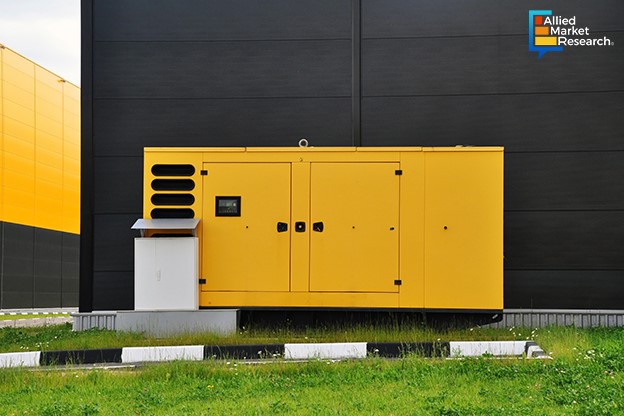How Has Environmental Sustainability and Digital Technology Integration Revolutionized the Diesel Generator Industry?

2 Jan
2025
Key takeaways:
- Introduction
- The rising shift toward environmental sustainability
- Integration of AI and machine learning
Global energy consumption has been increasing exponentially in the post-globalization era mainly due to the huge rise in the pace of industrialization and urbanization in almost all developed and developing countries. While most of this electricity demand is met through central power grids, the residential sectors in certain inaccessible regions require alternative energy generation and distribution mechanisms. At the same time, commercial enterprises and industrial facilities need a backup energy source to continue running their operations in case of power outages. Such a diverse set of demands has increased the utility of diesel generators in urban and rural setups.
A diesel generator essentially is a machine involving a combination of an electric generator with a diesel compression-ignition engine to produce electricity. The equipment converts chemical energy available in diesel fuel to mechanical power through combustion processes. The energy efficiency offered by these generators is the primary reason behind their rising demand, especially from industrial facilities. Compared to other energy sources, diesel has higher stability and burns at a consistent rate, thus showcasing an efficient energy usage pattern. Engineering studies have shown that diesel generators perform the same amount of work with half the fuel in comparison to the gas-powered generator sets. The low cost of maintenance and repair has also played a major role in the increased adoption of diesel gensets by various end-use sectors.
Growing demands for emission reduction transforming the industry
A major hurdle in the growth of the diesel generator industry is the increasing awareness among people across the world regarding environmental sustainability. Moreover, several governments have signed multinational agreements that seek to reduce carbon emissions from the global economy to bring down the pace of climate change and global warming. As a result of these developments, governmental authorities in these nations have enacted stringent laws and regulations mandating the use of eco-friendly energy generation and distribution systems. To address these concerns, diesel generator manufacturers have started investing in sustainable genset systems that have a minimal impact on the environment.
The diesel generator industry, which accounted for $20.8 billion in 2019, is predicted to register a revenue of $37.1 billion by 2027, at a CAGR of 9.8% during 2020-2027. The development of hybrid diesel generators is one such important trend influencing the growth of the sector. As the name suggests, the diesel engines in these gensets are combined with renewable energy sources such as solar PV cells to reduce the consumption of fossil fuels. This not only minimizes the negative effect on the ecology but also brings down the operational cost of the machine, thereby increasing profitability in the long run.
Along with this, several manufacturing companies have developed optimized powertrain functionalities that reduce carbon emissions in the long run. These techniques employ advanced cameras, sensors, and other imaging technologies to monitor fuel usage and proactively maintain optimum levels for lowering emissions. Moreover, diesel generator businesses have started developing after-treatment systems to treat old diesel engines and make them compliant with the latest industry standards. These systems generally aim at removing the impurities and pollutants that get stuck in the filter, thus effectively renewing these engines. Among many other such solutions, diesel particulate filters (DPF) and selective catalytic reduction (SCR) have become particularly popular due to their high-performance capabilities.
Integration of digital tools creating new investment opportunities in the sector
Along with the shift toward sustainability, the introduction of advanced digital technologies such as AI, machine learning, and IoT into diesel generators has helped create multiple investment opportunities in the sector. The main purpose behind the integration of computer systems is to improve the operational efficiency of these generators. Diesel genset companies have partnered with technology companies to develop specialized tools that work with ignition and exhaust systems, emission processes, and many more.
The use of AI-based tools has also increased, especially due to their ability to process large amounts of data and provide personalized insights based on usage patterns. Machine learning algorithms are also being deployed to analyze and track the various parameters and help predict failures proactively, thus reducing downtime and expenses related to repair and maintenance.
Many leading companies have launched innovative products in the last few years to expand their footprint across the globe. In October 2024, Moteurs Baudouin, a French diesel engine manufacturer, unveiled a new product line of diesel generators for data centers. Powered by two platforms, viz., M33 and M55 series, the output range of these diesel generators lies between 2000 kVA to 5250 kVA. As per the company’s press release, this product launch is expected to help Moteurs Baudouin to cater to its customers’ demands comprehensively.
To summarize, the overall increase in the global energy demand has played an important role in the growth of the diesel generator industry. Furthermore, the transition toward environmental sustainability and the integration of advanced technologies such as AI and IoT is expected to impact the sector positively.
Contact our experts for the growth drivers and investment opportunities in the diesel generator industry!

Akhilesh Prabhugaonkar
Author's Bio- Akhilesh Prabhugaonkar holds a bachelor’s degree in Electronics Engineering from the reputed Vishwakarma Institute of Technology. He has a special interest in the fields of forensics, world history, international relations and foreign policy, sports, agriculture, astronomy, security, and oceanography. An ardent bibliophile and melophile, Akhilesh loves to write on topics of his interest and various other societal issues. This love for writing made him enter the professional world of content writing and pursue his career in this direction.
Avenue: Entire Library membership of Allied Market Research Reports at your disposal
- Avenue is an innovative subscription-based online report database.
- Avail an online access to the entire library of syndicated reports on more than 2,000 niche industries and company profiles on more than 12,000 firms across 11 domains.
- A cost-effective model tailored for entrepreneurs, investors, and students & researchers at universities.
- Request customizations, suggest new reports, and avail analyst support as per your requirements.
- Get an access to the library of reports at any time from any device and anywhere.
Related Post
-
How are Submarine Cables Transforming Global Connectivity with Enhanced User Experience?
-
Endoscopy Procedures: Transformations in Techniques and Applications
-
AI-Powered Video Analytics: How the Product Actually Works for enterprises
-
Painting Robots: Transforming Precision Coating and Creative Applications
-
Innovations in Pharmacovigilance Systems Advancing Patient Safety
-
Understanding Edge Security: Keeping Data Safe Near the Source
-
Exploring the Use and Advancements of 3D Laser Scanners in Professional Applications
-
Reinforcing Industrial Controls with Smarter Tools and Training








